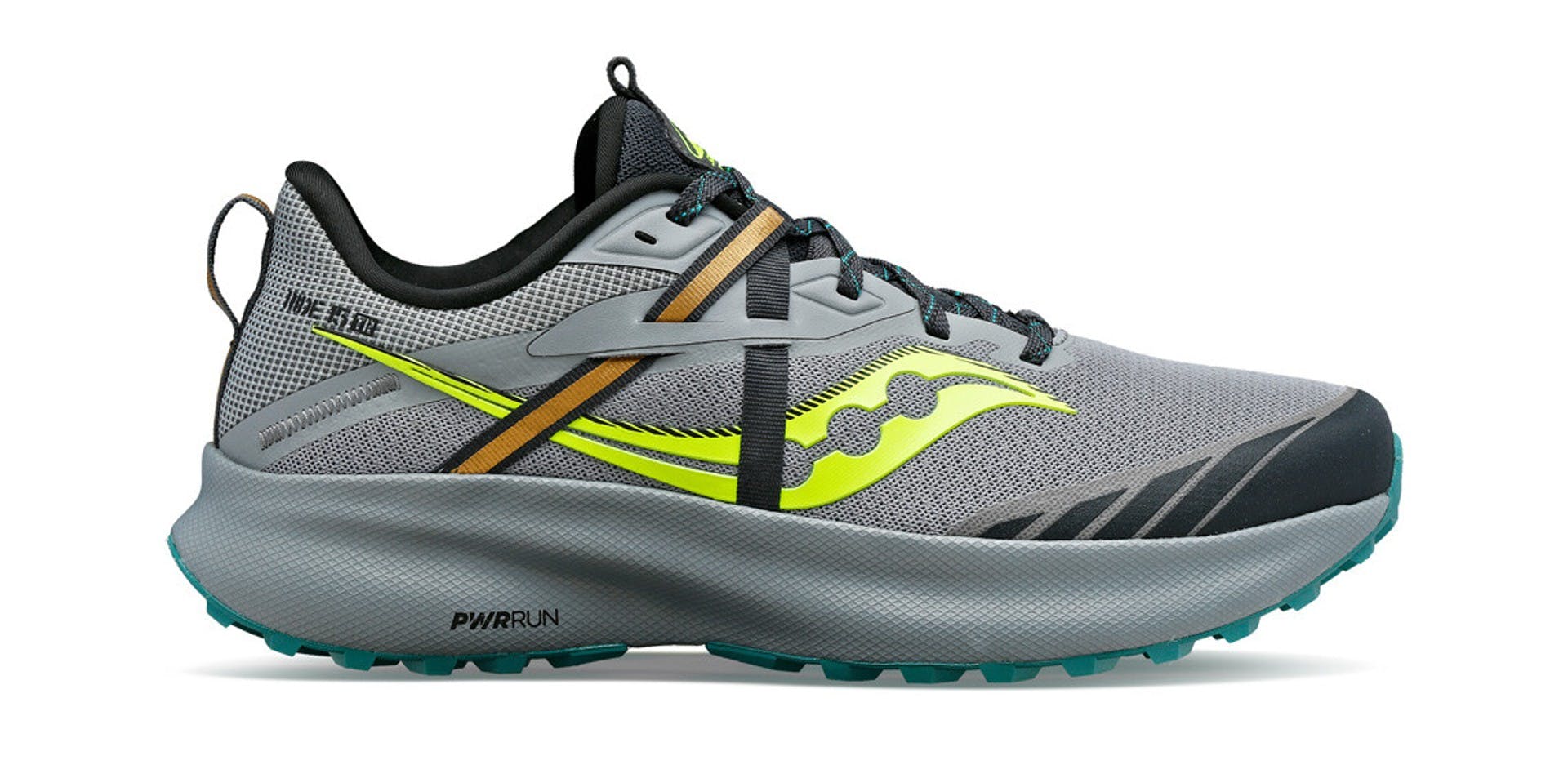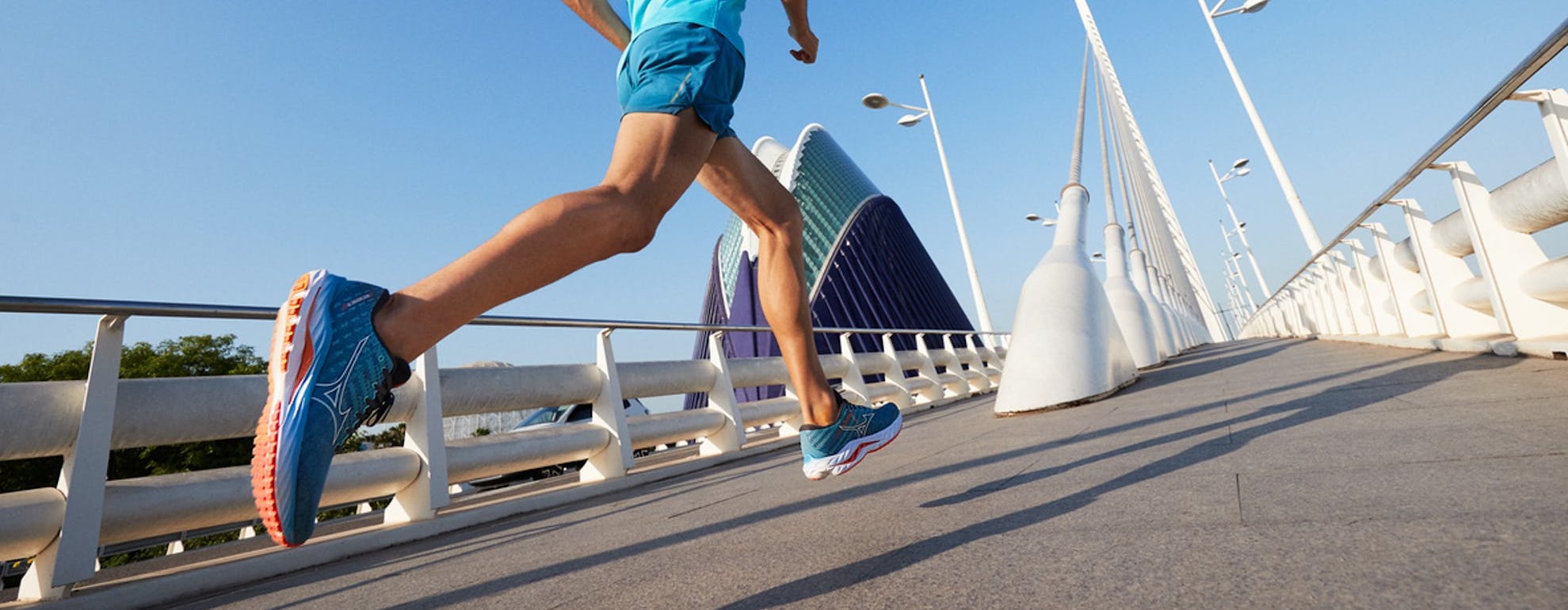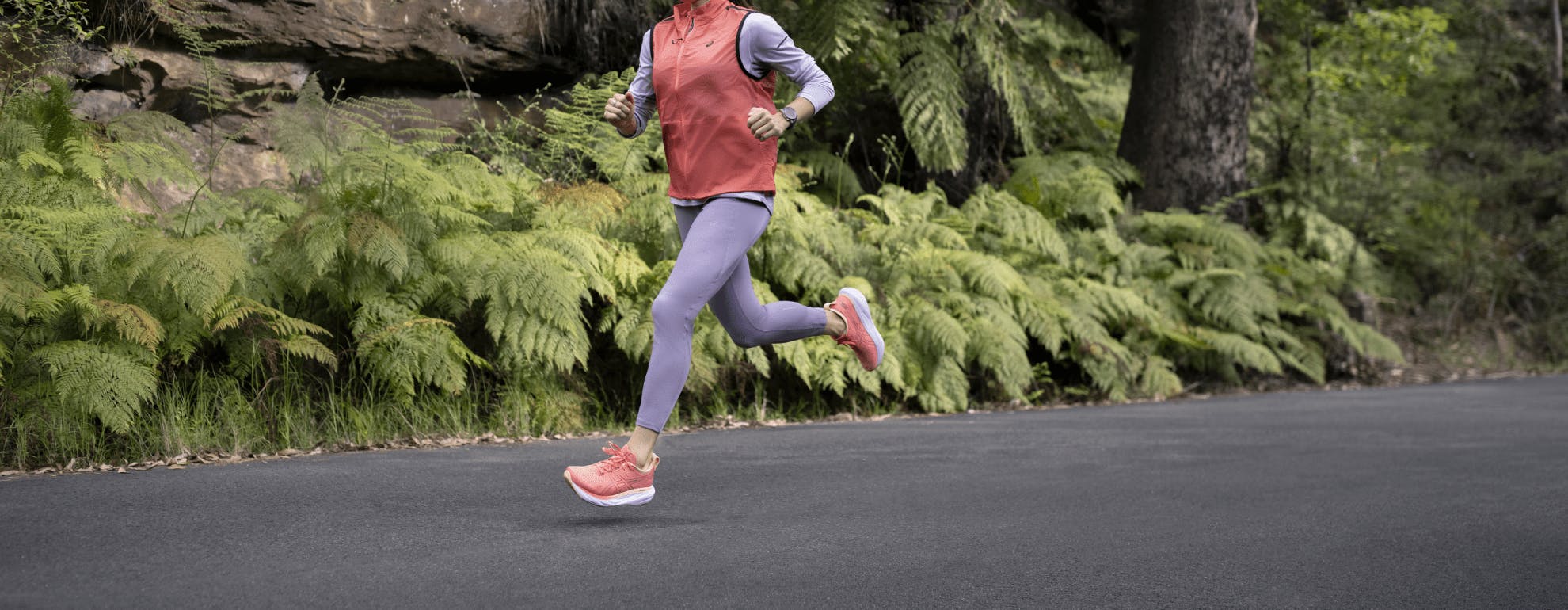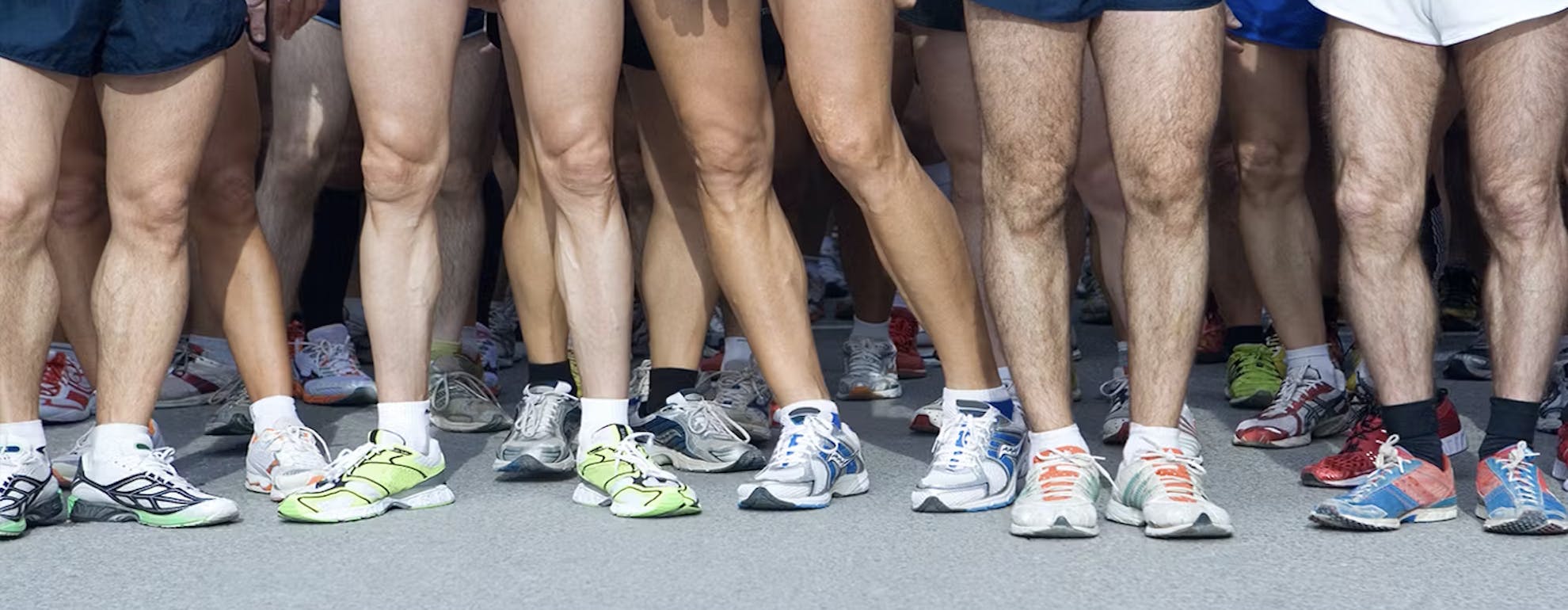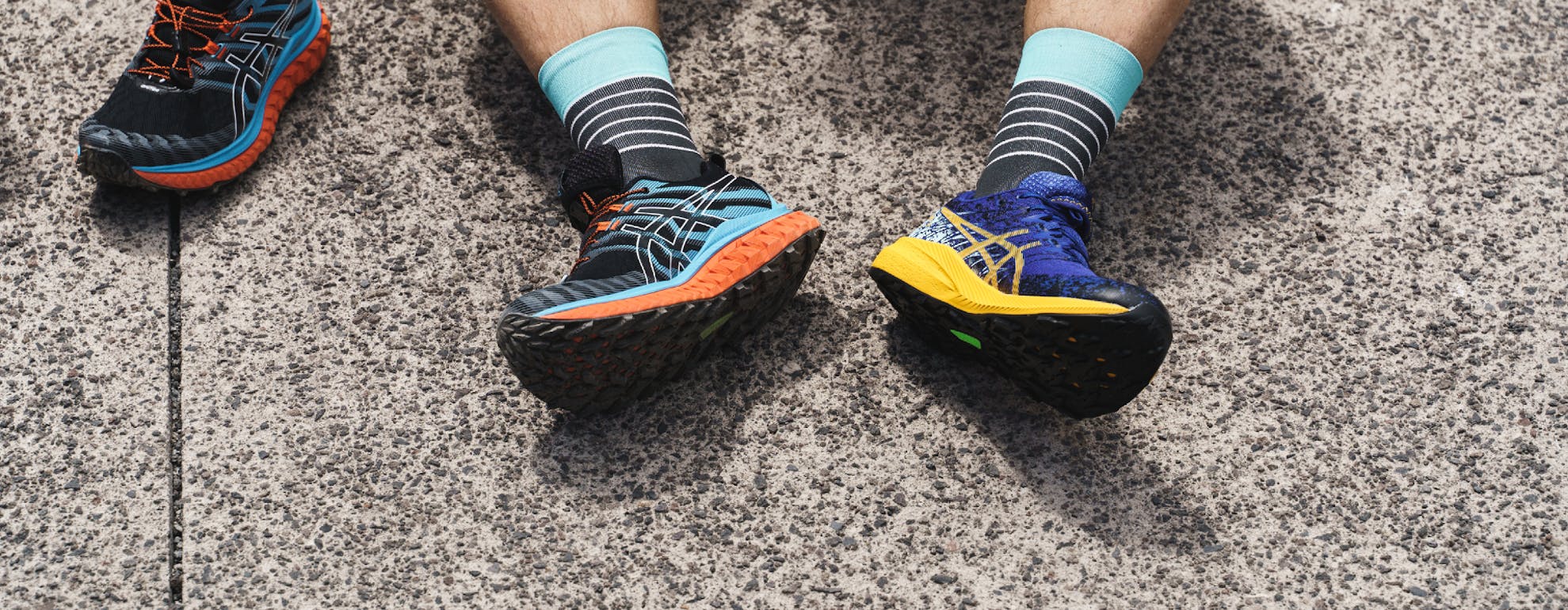
A Beginner's Guide to Buying Running Shoes
13 March 2024
Why is it so important to find the perfect running shoe?
Shoes are undoubtedly the most important piece of running kit, so it’s imperative to find the perfect pair to suit our feet.
The right shoes can help to increase performance, prevent injury and provide comfort during exercise. Our feet are as individual as we are and they come in all different shapes and sizes. Therefore, running shoes have to be equally as diverse and with hundreds of types to choose from, it can often prove difficult finding the right pair to match our requirements.
There are many factors to consider before purchasing; size and width are the most important, but also understanding how we run and make contact with the ground (pronation), the terrain and distance we intend to run on and of course, how much we’re willing to spend.
The key factors are comfort, grip, cushioning, support, protection and durability. It’s up to us to decide which of these factors we consider to be most important, so that we can then find the right shoe based on our chosen preference/s.
All running shoes are different, but they can be categorised to help make it easier for us to choose the right ones for the right purpose.
ㅤ
Generally speaking, these are the 3 main shoe categories;
ㅤ
1. Cushioned/Neutral Range
As a rule, the higher the RRP of a cushioned shoe the more cushioning you will get. Higher prices do not mean they will last longer, but just give you increased protection from the short term and long term impacts of road running.
ㅤ
2. Support/Overpronation Range
This range offers built in support suited to the overpronator. Otherwise the same logic as with the cushioned range applies that the higher the RRP of the shoe, the more cushioning you get.
ㅤ
3. Race Ready Range
Race shoes are not ideal for all runners and the time savings that can be had from wearing them can be offset by the lack of cushioning or support they may offer. For example, someone running a 4-hour+ marathon will likely be more comfortable wearing their everyday mileage shoes. Also, race shoes, if used for everyday training, can be less durable and wear out faster.
ㅤ
What is pronation and gait analysis and what exactly is the difference between the two?
We are all unique individuals and the same applies to how we run. Pronation is a commonly used term which refers to the way in which our foot rolls when we strike the ground during running and differs from person to person.
There are three distinct categories that we all fall into; neutral, overpronation and underpronation AKA. supination.
Neutral runners are less prone to injury as they strike the ground more efficiently, keeping feet, ankles and legs more aligned on impact with the ground. This type of runner will generally notice more wear in the centre of the shoe and would choose a neutral shoe which allows for their standard running gait.
Most of us overpronate, which means our feet roll inwards on impact and shoes tend to show extra wear on the inside of the heel and/or under the balls of the feet. Overpronators are therefore better suited to a shoe with more cushioning to help support and control the inward rolling of the foot.
ㅤ
Click here to read about our Best Running Shoes for Overpronation 2024
ㅤ
Underpronators/supinators are the opposite and tend to wear shoes down mostly on the outside of the shoe, as their feet roll outwards on impact with the ground. A well-cushioned neutral shoe usually suits an underpronator.
ㅤ
Click here to read about our Best Running Shoes for Underpronation 2024
ㅤ
It’s important to understand which category you fall into, as wearing the wrong type of shoes and not finding the right ones can ultimately lead to injuries such as plantar fasciitis, shin splints or ankle strain.
Gait analysis refers to the scientific procedure which provides biomechanical information used to determine a person’s running style and gait. The results of a gait analysis can help to recommend specific shoes to suit the needs of every individual. SportsShoes provide online gait analysis for expert advice.
ㅤ

ㅤ
When buying online, how can you test whether a shoe really fits?
The obvious difficulty with buying online is that you can’t physically try on a pair of shoes before you make a purchase. SportsShoes provides customers with all the information they need in order to choose the correct shoe.
Firstly, product specification is always provided to describe each shoe in detail. This includes information about how the shoe fits, in terms of length and width, and also what type of terrain that it has been specifically designed for. Knowing the size and shape of your feet is essential. For example, INOV8 shoes have a both standard and wide shoe fits, helping customers to choose a shoe which best matches the width of their feet.
Often sizing can differ between brands, which is why at SportsShoes, we provide our own recommended size guide, comparatively describing the fit of every shoe in relation to standard UK sizes.
Our The Running Shoe Finder is the most accurate and helpful online tool available, as it helps you to find your perfect shoe by asking the necessary questions based on gender, surface/terrain, pronation, budget and size. In addition to this you can also use the online gait analysis for expert advice. By uploading a short video of you running on a treadmill, the foot lab can provide important information about the way you run, helping you to pick a shoe to suit your running gait and style, thereby increasing levels of performance and helping to prevent the risk of injury.
Finally, our website also provides detailed expert and customer reviews, which describe the shoes and their performance in detail. You can feel reassured that other runners have recommended a shoe (or not!) before making a purchase.
ㅤ
How should it feel when you try on running shoes?
A shoe should feel comfortable from the very first moment you try them on. In terms of length, your toes should never touch the end of the shoe, and equally there shouldn’t be too much spare room either. Feet should never feel cramped and there should always be sufficient room to wriggle your toes and allow them to move freely.
If you are planning on running off-road, it’s also advisable to purchase a shoe with a snug fit, therefore reducing as much movement inside the shoe as possible when running on uneven and unpredictable terrain.
Alternatively, if you are planning on running long or ultra-distances, a slightly roomier shoe would be a better option, as after a few hours feet are prone to swelling.
ㅤ
Are there different models for beginners and elites?
If you are a beginner then it’s probably best to choose a good ‘all-round’ shoe, something that is going to cope with a range of distance and terrain. For example, the Saucony Ride 15 TR are a perfect hybrid model, specifically designed to perform on both road and trail. They will provide comfort and cushioning for the road, with the necessary grip for traction on the trails.
In comparison, elite athletes will have a better idea of what kind of shoe they’re looking for to aid comfort and performance and it’s likely that they will have a range of shoes all suited to different purposes.
ㅤ
ㅤ
What features should you look out for in running shoes and why?
Running shoes can be broken down into many individual parts and components. Many brands now boast revolutionary and unique features designed to change and improve the way in which we run. However, the basic components of a running shoe will always remain the same.
Arguably the most important feature of a shoe is the sole, which can be broken into two distinct parts; the midsole and the outsole.
The former is specifically designed to provide both cushioning and shock absorption, whilst the latter provides the necessary grip and protection needed as the foot makes contact with the ground. The performance and life-span of the outsole depends entirely on the materials that it is made from. For example, hard rubber compound is less sticky and grippy than sift rubber compound, but the latter isn't as durable.
The toe-box of a running shoe is important as it is the area at the front of the shoe that houses your toes. The length of the toe-box should be around a thumbnail in distance from your longest toe to the end of the shoe. Also, if you have wide feet, you will also need a shoe with a wide toe box to suit. It’s crucial that both the length and width of the toe box match the shape of your feet in order to provide adequate room and help prevent injury and discomfort.
With so much choice in terms of design, features and performance, choosing the right pair of shoes ultimately depends on what you need them for and how well they fit and support your feet.
ㅤ
How much should I spend on a new pair of running shoes?
Your weekly mileage and goals can give you guidance on how much you need to spend on a pair, entry level shoes at £40-70 RRP are not going to give you as much protection, but if your aims are a weekly parkrun then you will probably be fine, as you step up your distance it becomes more important to have enough cushioning, £70-100 RRP should be getting you a shoe that is okay for 10-15 miles a week, looking at training for a marathon then you really need to be looking at £100 plus to be getting the level of cushioning required to help you keep injury free. Other factors can also be added into this decision, your body weight can make a difference. Consider 2-3 times your body weight being the impact force on each heel strike, at 10 stone you are looking at 20-30 stone of impact, 15 stone then more like 30-45 stone of impact. So, a 10 stone runner could get away with a lighter and less-cushioned shoe, whilst a 15 stone runner really needs a more substantial shoe with more cushioning.
Basically, the more you can afford to spend, the more cushioning, structure and protection you will get, but do not expect expensive shoes to last any longer than cheaper ones.
ㅤ
Should I buy a running shoe with more cushioning?
The main two elements most road runners are looking for are cushioning and support. Cushioning to protect the joints and muscles from impact related injuries and longer-term damage, which is a good idea for everyone.
A large part of the cost of most road running shoes is found in the midsole cushioning, so generally the more expensive the RRP. the better cushioned the shoe will be.
To an extent the same applies to trail running shoes, in that more expensive models do have more cushioning than mid/entry level. People tend to look at the sole first on a trail shoe and judge whether it looks like it will give them the grip they require. A good guide would be the deeper the lug then the less cushioning you will get. If you need a shoe with an 8mm lug, then you are likely to be running on very soft and muddy ground, so not much impact and therefore minimal cushioning required. Also, the support/over-pronation element is not as common due to the uneven nature of the ground not leading to such a repetitive foot strike. Support is more individual to your running gait, if you over-pronate then some support will be required, the amount depends on the severity of your over-pronation, a gait analysis can help with this.
ㅤ
What is drop and why does it matter?
Drop is often referred to as offset or heel-to-toe differential and is the difference in height between the heel and toe/or forefoot. This is always measured in mm and most commonly ranges from ZERO to 14mm.
In the same way you would choose a support shoe to help support your running gait, you should also choose a shoe which suits your running style.
Runners who heel strike (like myself) are better suited to a higher drop (ideally 8mm and above). The same applies to anyone suffering with sore calves or issues with their achilles. Midfoot and forefoot strikers are better suited to shoes with a low drop (below 6mm). The lower the drop, the more calf flexibility and ankle mobility you need because it puts more pressure and stress on your lower leg.
ㅤ
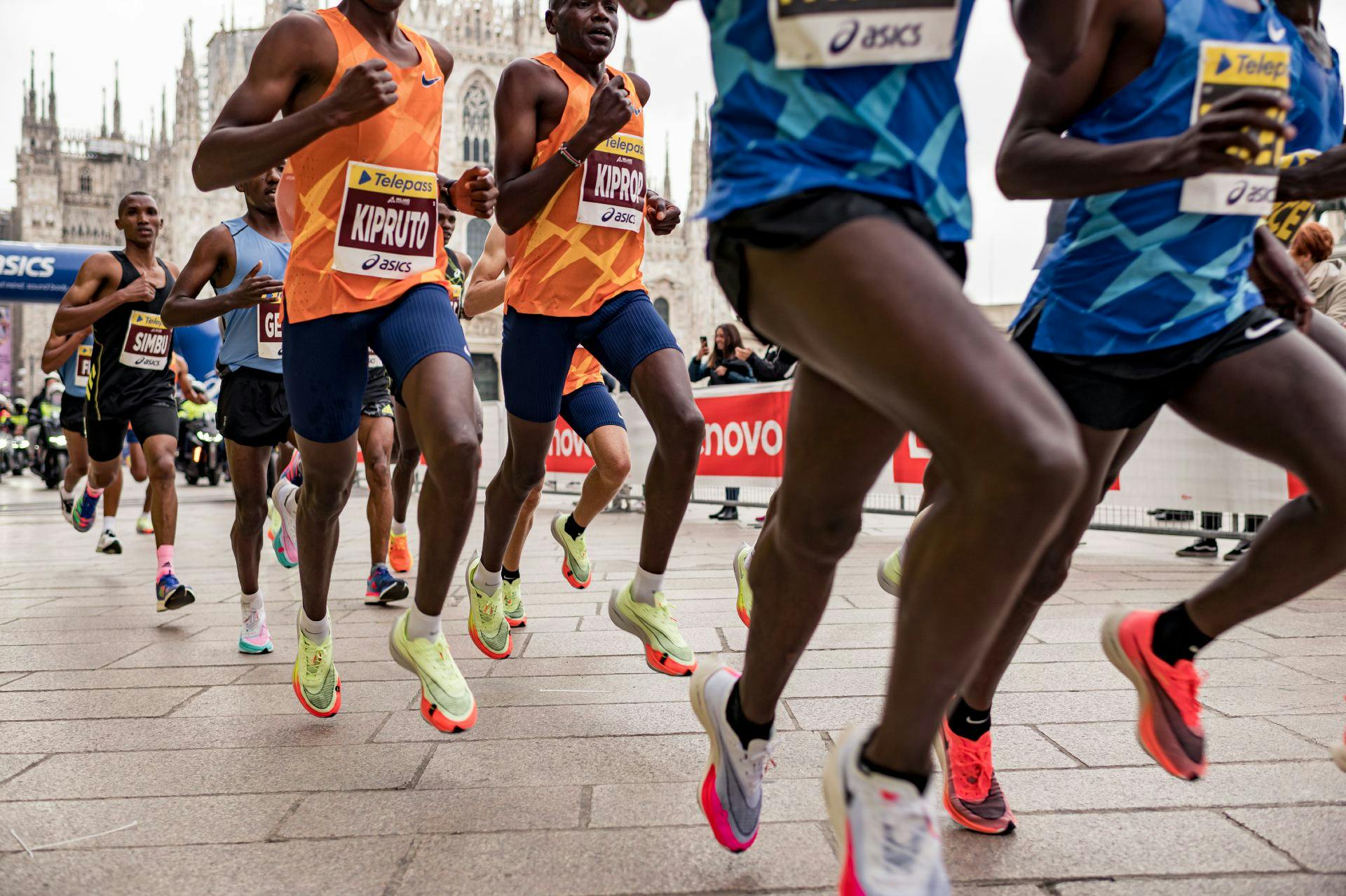
ㅤ
What is the plate in a running shoe?
Most running shoes now feature plate technology sandwiched somewhere inside the midsole. These plates are usually made from rigid plastic or carbon fibre and their purpose is to enhance performance and running efficiency. They provide propulsion for increased speed and energy return, plus stability and protection. The shape of plates differ in both road and trail shoes. For road, they usually run 3/4 to full length as a single piece of rigid material, whereas in trail shoes they are more commonly fork-shaped to allow them to flex as you move on uneven terrain for stability.
ㅤ
How much faster are carbon plate running shoes?
Carbon plated running shoes, more commonly referred to as 'super shoes', undoubtedly improve performance. There is some debate as to how much difference they make, but *an independent study published in 2022 by Associate Professor Dustin Joubert of Stephen F. Austin State University showed that on average, carbon-plated shoes increased the running economy of the athletes by around 2.5%.
It all depends on the person wearing them - how fast they are running and what kind of runner they are. In essence, the more speed and power you can put through the shoe, the greater the return. So, there is more benefit to an elite performer wearing carbon plate shoes compared to a slower paced runner.
*Ref: https://scientifictriathlon.com/tts322/
ㅤ
Are carbon plate running shoes legal?
Carbon plate running shoes are entirely legal, but are limited to a single rigid plate.
However, some 'super shoes' are deemed illegal for elite competition by World Athletics, but this is based on the stack height (size of the midsole) which must be 40mm or less.
ㅤ
Are carbon plate running shoes worth it?
In truth, they are designed for elite athletes who are looking to find those few extra seconds in a race, marginal gains in order to break records. Although performance enhancing, carbon plated race shoes are not ideal for everyone, despite being sold to the mass-market and the time savings that can be made from wearing them can be offset by the lack of cushioning or support they may offer. For example, someone running a 4-hour+ marathon will likely be more comfortable wearing their everyday mileage shoes. So, it really depends on the person wearing them - how much you are willing to pay, what you are wanting to achieve and whether or not they are suitable for your needs.
ㅤ
How long do carbon plate running shoes last?
Carbon plated race shoes, if used for everyday training, are generally less durable and will wear out more quickly than regular shoes. This is because they are built with lightweight materials to complement speed e.g. ultra thin breathable mesh uppers and super soft lightweight midsole foam, which is likely to degrade and deform at a faster rate to that used in everyday models.For example, the new adidas Adizero Pro Evo 1, worn by Ethiopian runner Tigst Assefa when she set the women's marathon world record of 2:11:53 in Berlin last year, is the lightest and most expensive super shoe in the world, but is marketed as a single-use shoe. Retailing at a whopping £450 it's a considerable investment. So, remember that enhanced performance comes at a price and you should expect to pay more money for less miles.
ㅤ
How often should you change your running shoes?
Running in worn-out shoes can cause a number of issues, ultimately leading to future injury woes. The following advice will provide you with all the information you need on the subject, such as when and why you should replace your running shoes and how many miles you can expect from each pair.
Monitor the condition of your shoes on a regular basis. There will be noticeable signs of wear after considerable use and any damage usually becomes visible at pressure points e.g parts of the shoe that take the most impact, especially the outsole and uppers - where your shoe bends and stretches as you run. The grip and tread on your shoes will likely deteriorate the most, and this might happen more on one side of the sole than the other, depending on what kind of runner you are.
ㅤ
Track the mileage of your shoes by using a platform like Strava. You can add your running shoe/s to your personal equipment list via the SETTINGS menu and MY GEAR. Each time you complete a run, select the shoes you have used for that particular activity and the mileage will be automatically recorded and added to a cumulative total. When adding new shoes to your Strava account, don’t forget to set a notification e.g. 300 miles to remind you exactly when your shoes will need to be replaced.
Generally, 300 miles is the minimum you should expect from a shoe and 500 miles is the maximum. After this, you should look at replacing your shoes with a new pair.
Click here to find out more about why and when you should replace your running shoes.
ㅤ
Interested in the latest shoes, apparel and technology? Then head over to our Kit & Gear category for more reviews, tips, advice and product releases.
Featured Articles
View All
